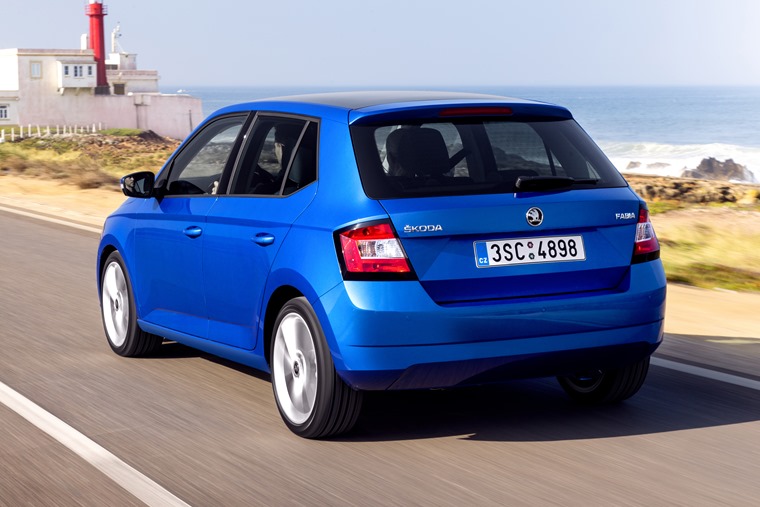Review: Skoda Fabia SE 1.0 75
The 1.0-litre MPI engine may be the VW Group’s city car engine, usually found under the bonnet of Ups, Miis and Citigos, but it’s also being used in the group’s B-segment cars, even in its least potent 60PS (59bhp) guise.
The latest car to feature the dinky three-pot is the new Skoda Fabia, which will hit showrooms at the end of January, complete with class-leading practicality and a sharp, stylish and modern exterior. Not only is the one-litre available, but the 75PS (74bhp) version in mid-range SE trim is forecast to be the top seller. We took one for a spin to see what’s what.
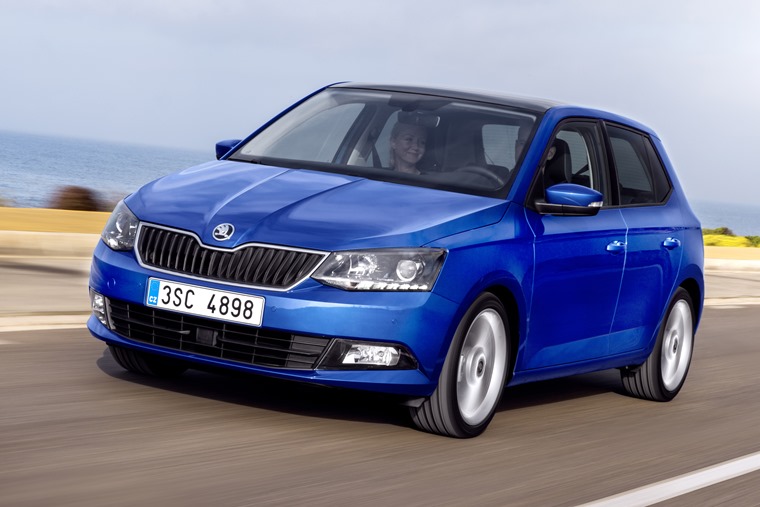
Too small
Let’s cut to the chase here. The 1.0-litre engine with 74bhp is just a little too small for a car like the Fabia.
Even though the MQB-derived technologies have reduced the weight by 65kg, the car has a kerb weight of 980kg. That makes it fairly light, but it’s still 115kg more than the Citigo, and that takes a leisurely 13.2 seconds to get from 0-62mph. It’s no surprise then that the heavier Fabia takes an even more sluggish 14.7 seconds to complete the benchmark sprint.
So performance is not the 1.0-litre Fabia’s forte, but what about fuel economy? Surely that’s where the little engine will come good?
Well, not quite. Although, on paper, things stack up well.
Officially, the car is capable of 58.9mpg, making it the least efficient Fabia, but still allowing it to edge the comparable versions of its key competitors by a couple of mpg. The exception, perhaps unsurprisingly, is the Volkswagen Polo, which shares the Fabia’s engines and matches its headline figures.
It’s not bad on CO2 emissions either, emitting 108g/km to put VED at £20 a year and BIK company car tax at 14% at 2014/15 rates. In comparison, the five-door 1.25-litre Fiesta emits 120g/km (putting VED at £30 a year and BIK at 17%) and the 1.2-litre SEAT Ibiza emits 125g/km (VED £110, BIK 18%).
That sounds fine, but because performance is so poor, the engine has to be stretched and that damages economy.
Blunted
Thankfully, the engine doesn’t distract too much from the Fabia’s driving dynamics, which may not be its best feature, but they’re solid enough.
The new car is wider than its forerunner and it rolls much less through the corners, and it feels like there’s a little more grip there.
Sadly, the electro-mechanical, MQB-derived power steering has blunted the turn-in and almost completely removed the feedback through the steering wheel. Some buyers won’t mind that in the slightest, because it lightens the steering and reduces any tugs at the wheel caused by potholes, making the Fabia a tiny bit easier to drive around town. Motoring enthusiasts, however, will miss the old car’s darting responses to the helm.
The old car was a little more comfortable, too. It was never the smoothest-riding car on the market, but the new model is definitely a little stiffer, which means you can feel the full force of every speed bump or pothole.
Don’t think that firm ride makes it uncomfortable everywhere though. On the smoother motorway, the Fabia is very comfortable, blessed with supportive seats and a decent driving position, in addition to ample cabin space.
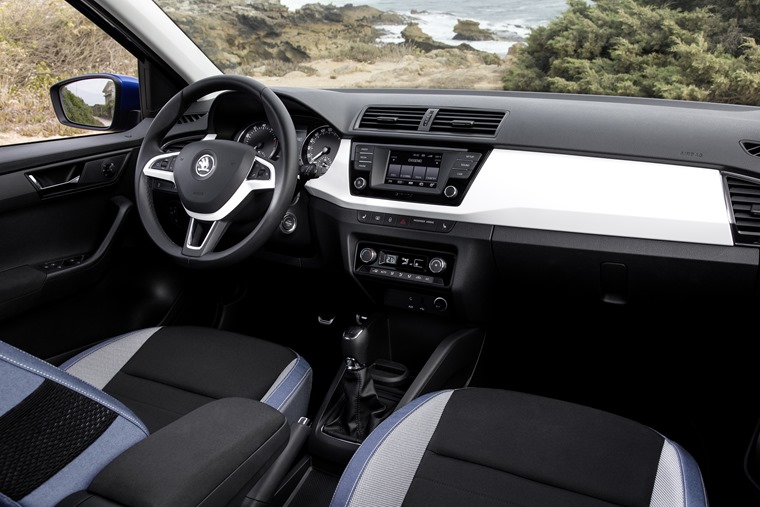
The only real issue when you’re up to motorway cruising speed is the refinement. There isn’t too much road noise, but the three-cylinder engine’s characteristic thrum is a bit too obvious and the rush of the air over the new bodywork is clearly audible.
Trim
It might sound like we’re giving the most popular Fabia a bit of a kicking, but it does actually have some real plus points.
Skoda feels that its brand has gone beyond just selling decent cheap cars and it now tries to offer value-for-money, practical cars with some really well thought-out touches. The Fabia fills that brief perfectly, providing VW build quality (although the cabin materials aren’t quite up to VW standards) and the biggest boot in the segment, as well as neat tricks like the ice scraper in the fuel filler cap and the optional litter bin in the door pockets. It’s also only available with five doors.
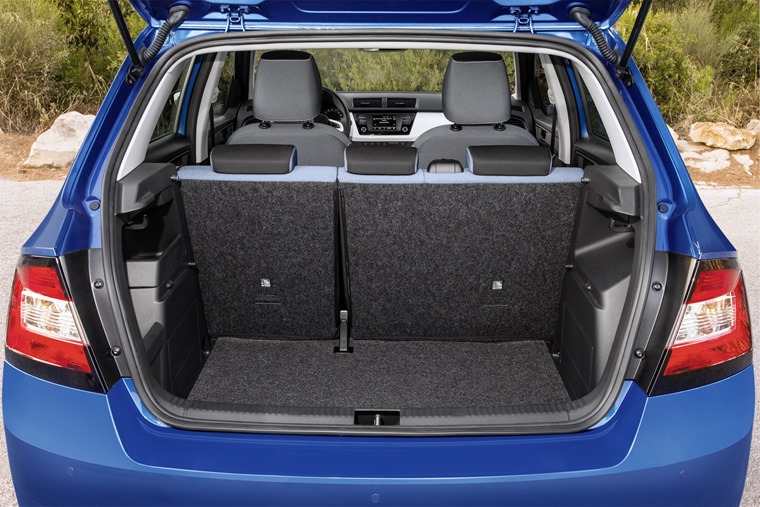
It isn’t badly equipped either, and the mid-range SE trim provides a 6.5in touchscreen, 15in alloys, air conditioning, rear parking sensors and the Mirror Link technology, which allows Android phones’ apps to be shown on-screen, the idea being that the smartphone can be used as sat nav, an option that proved unpopular with buyers of the old car.
The system does have one or two drawbacks though. First of all, the system requires an Android phone because Apple have been slow to offer Mirror Link compatibility, so iPhone users are stuck. The other issue is that the only approved Mirror Link navigation app is Sygic’s (even Google Maps won’t work properly) and it costs £71.99.
Another big tick against the Fabia’s name is the Colour Concept, which is Skoda’s attempt at personalisation. By offering to paint the roof and wheels in either black, grey or white for £250, the Czech brand has instantly created 93 separate colour combinations. Rallye Green and Black (seen here on a diesel model) and Pacific Blue and Silver are two of our personal favourites.
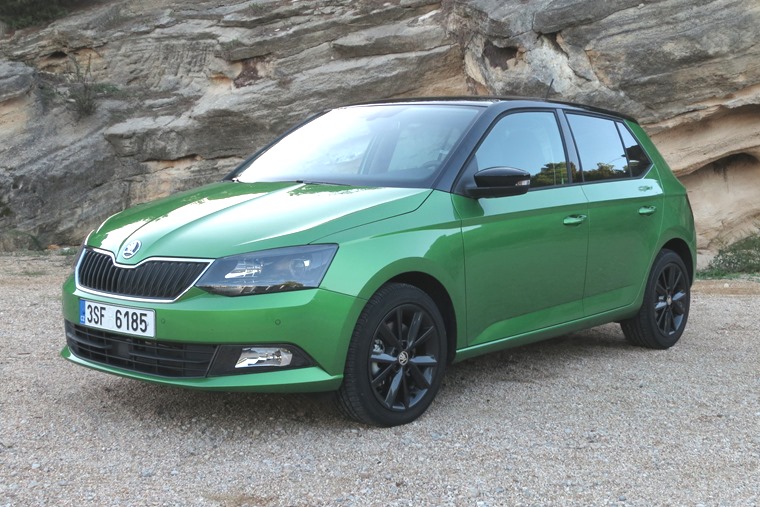
The elephant in the room, however, is price. Skodas may still represent decent value but they aren’t that cheap anymore, and the new Fabia starts from £10,600 –£455 more than the cheapest Fiesta. This SE model, though, costs £12,760 and the options on our test car took that to £13,375. Even so, for a five-door with this much kit, it’s not too pricey and decent residuals will keep lease rates down.
The verdict
The Fabia is by no means the best car in the segment but it’s decent, and that should be enough to maintain its position in the segment. If it’s the Fabia you want then, this SE trim is definitely the one to go for, but leave the 1.0-litre engine well alone and spend a couple more pounds a month on the 1.2 with 89bhp, which is faster and more economical. It’s well worth it.
Skoda Fabia SE 1.0 75 at a glance
For:
+ SE trim is the one to go for
+ Engine is more economical than most comparable opponents
+ VW Group build quality is immediately evident
Against:
- 1.0-litre engine is gutless
- Ride is a bit too firm
- Mirror Link technology is flawed, but that may change over time
Vital stats
Length: 3,992mm
Width: 1,732mm
Height: 1,467mm
Wheelbase: 2,470mm
Kerb weight: 980kg
Boot space: 330 litres
Power: 74bhp
Torque: 95Nm
0-62mph: 14.7s
Top speed: 107mph
Fuel economy: 58.9mpg
CO2 emissions: 108g/km
Price: £12,760
